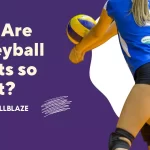A very important part of volleyball becomes tracking player stats as you progress to a higher level.
It is one of the most useful stats for coaches to determine how effective an attacker is based on their hitting percentage, otherwise known as hitting efficiency or kill efficiency.
What Is A Good Hitting Percentage In Volleyball? According to general guidelines, a good hitting percentage is roughly between .250-300+, depending on the position and level of play.
To understand how this statistic is calculated, and how it differs from similar ones, let’s first look at how it is calculated.
Our final point is to look at some hitting percentage benchmarks for different positions at different levels of the game and what you can do to improve your performance.
How To Calculate Hitting Percentage In Volleyball?

The concept of hitting percentage is technically referred to as hitting efficiency.
There are many words that can be used to express similar concepts, but people tend to use them differently.
There is no difference between multiple terms
The hitting percentage, hitting efficiency, and kill efficiency are all terms people use interchangeably to describe this volleyball stat.
It is important to realize that all of those terms refer to the same thing if you hear them.
It’s most commonly referred to as hitting percentage, so we’ll use that term.
Volleyball Hitting Percentage Formula
The calculation is as follows.
Hitting Percentage = (Number of Kills – Number of Errors)/Total Attempts
What are the sources of these numbers?
Statistic Recording
Coaches should manually record the number of kills, errors, and attempts a player makes in order to determine their hitting percentage.
An ‘+’ is added to the stat sheet for every kill a player makes.
They make every error with a ‘-‘.
In the event they do not kill or fail, it’s logged as ‘0’ every time.
Kills are hits that are unreturnable and result in points being scored.
You may enjoy reading How Many Sets Are in a Volleyball Game?
How Is Hitting Percentage Calculated?

In sports such as volleyball and tennis, hitting percentage is also known as hitting efficiency or attack percentage. Using volleyball as an example, I’ll explain how hitting percentage is calculated.
A player’s hitting percentage measures how effectively he or she completes attacks or kills. In order to calculate hitting percentage, follow the formula:
Hitting Percentage = (Number of Kills – Number of Errors)/Total Attempts
This formula is broken down into the following terms:
- Total Kills: How many points the attacking team gets from successful attacks. When the ball lands on the opponent’s court and cannot be returned by the opponent, it is referred to as a kill.
- Total Attempts: The number of attacks attempted by the player. In addition to successful kills, there may also be unsuccessful attempts which may cause errors (for example, hitting the ball out of bounds or into the net).
As a percentage instead of a decimal, the hitting percentage is multiplied by 100.
The hitting percentage of a player with 20 kills in 40 attempts is:
Hitting Percentage=(20/40)×100=50%
Hitting Percentage=(40/20)×100=50%
Accordingly, the player in this case has a 50% hitting percentage. Higher hitting percentages indicate greater efficiency, since they indicate a higher ratio of successful attacks over total attacks.
Hitting Percentage Vs Kill Percentage
The terminology here can be a little confusing, so be careful…
There is a difference between kill percentage and kill efficiency/hitting efficiency/hitting percentage.
Kill percentage can be defined as the number of kills divided by the number of attempts.
Based on the above example, our outside hitter had a 50% kill rate after making 10 kills from 20 attempts.
These stats differ slightly – she has a hitting percentage of .300, but a kill percentage of 50%.
You may enjoy reading What is a Defensive Specialist in Volleyball?
Volleyball Hitting Percentages: An In-Depth Guide
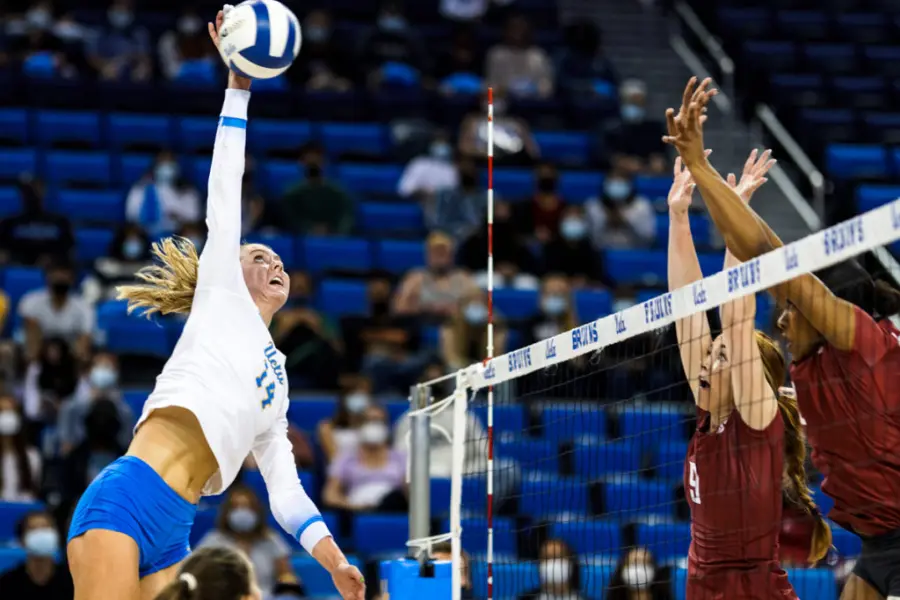
1. Understanding the Basics:
- Total Kills (K): A team’s point total for successful attacks.
- Total Attempts (TA): How many attacks the player has attempted.
2. The Formula:
- Hitting Percentage = (Number of Kills – Number of Errors)/Total Attempts
3. Interpreting the Hitting Percentage:
- Percentage Scale: The percentage of hits is expressed as a percentage, where higher values indicate greater efficiency.
- Example: A 50% hitting percentage indicates that half of the player’s attacks were successful.
4. Analyzing Different Scenarios:
- High Hitting Percentage: The percentage of attacks that succeed in converting into kills. A hitter who hits effectively and efficiently shows this characteristic.
- Low Hitting Percentage: Attacks are challenging to complete. There may be many reasons why this is happening, including the opponent’s strong defense, an error, or the need to improve the skill.
5. Factors Affecting Hitting Percentage:
- Skill Level: The higher a player’s skill level, the more control and placement they possess, which leads to a higher hit rate.
- Opponent Defense: A player’s hitting percentage can be affected by the defense of the opposing team. It is possible to reduce successful attacks with a strong defensive team.
- Errors: When players make unforced errors, they reduce their hitting percentage.
6. Improving Hitting Percentage:
- Technique Refinement: Enhancing accuracy and reducing errors can be achieved by refining your hitting technique and form.
- Shot Selection: Selecting the right shot, taking into account the opponent’s defense, is key to a successful attack.
- Team Communication: Setting up an offensive strategy with teammates and setters is crucial to its success.
7. Team Context:
- Middle Blockers vs. Outside Hitters: Middle blockers have faster sets and shorter net distances, which may lead to higher hitting percentages. Angles and defenses are often more challenging for outside hitters.
- Setters: Despite not being measured by hitting percentages, setters are crucial to the creation of high-percentage opportunities.
8. Monitoring Progress:
- Consistency: High hitting percentages over multiple games indicate sustained success.
- Game-by-Game Analysis: Understanding how adaptability and performance vary can be gained by comparing hitting percentages between matches.
An evaluation of an offensive player’s effectiveness in volleyball requires a thorough understanding of and monitoring of hitting percentages. Coaches, players, and teams can use it to continuously improve their performance.
You may enjoy reading What Is A Side Out In Volleyball?
Are Hitting Percentages Important for Volleyball Players?
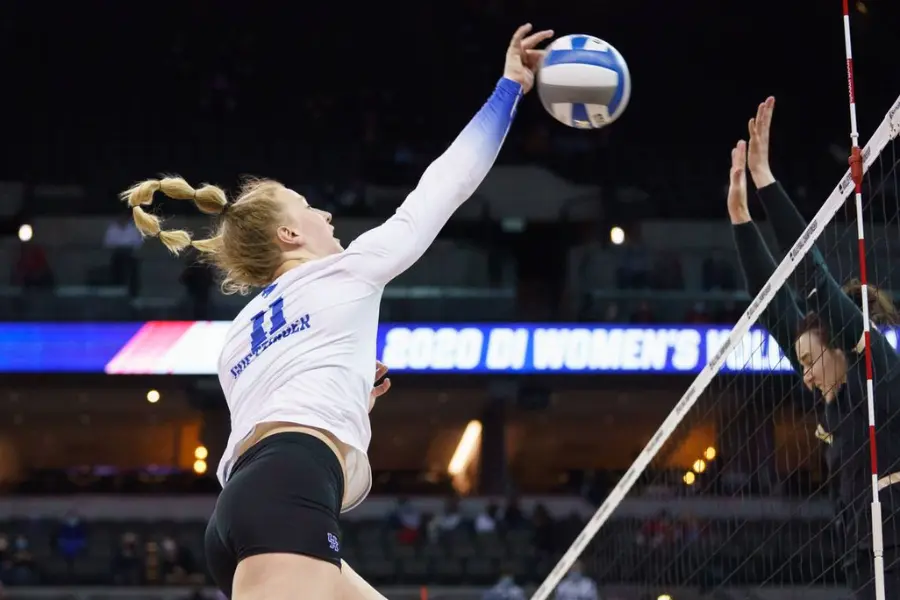
Yes, hitting percentages are crucial for volleyball players, as they are a key metric used to assess a player’s efficiency and effectiveness. Volleyball hitting percentages are important for several reasons:
Efficiency Measurement:
A player’s hitting percentage measures how well they convert their attack attempts into successful kills. In other words, it represents the ability of the player to contribute positively to the offensive performance of the team.
Performance Evaluation:
In order to evaluate an individual’s performance, coaches and players use hitting percentages. Players who consistently score points for the team have high hitting percentages.
Goal Setting and Improvement:
The goal of improving hitting percentages is often set by players. These statistics can help them identify areas of improvement in the way they use shots, how they select them, and the overall skills they possess as offensive players.
Team Strategy:
The hitting percentage is used by coaches to devise strategies for their teams. When certain game situations arise, high hitting percentage players may be prioritized, resulting in more effective and strategic offenses.
Adaptability Assessment:
A player’s hitting percentage can provide insight into his or her ability to adapt during a game. High-level players exhibit higher levels of skill when they can perform efficiently against different opponents’ defenses.
Statistical Comparison:
A player’s hitting percentage can be compared to that of another player in the same position. By analyzing the offensive contributions of players, coaches are able to make informed lineup selections.
Scouting and Opponent Analysis:
Identifying key offensive players and devising defensive strategies is often based on an opponent’s study of hitting percentages. The defense of the opposing team may be more attentive to players with high hitting percentages.
Team Success:
A team’s success is influenced by individual performance metrics like hitting percentages in team sports like volleyball. A team’s chances of winning are enhanced when players consistently contribute positively to its offense.
Accountability and Focus:
Players who focus on improving their hitting percentage tend to contribute more offensively. As a result, precision, shot placement, and minimizing errors are encouraged.
Fan and Media Interest:
A high hitting percentage often attracts the attention of fans and the media. A player’s consistent offensive excellence can make them stand out and make the game more exciting for fans.
Kill Percentage: A Problem
Can you recall the outside hitter who hit 10 kills in 20 attempts with a kill percentage of 50%?
Her performance couldn’t be tracked by kill percentage if we only looked at the number of errors she made, or by how many great digs she made to preserve the point…
There is a huge difference between the two.
True Offensive Efficiency is Revealed by Hitting Percentage
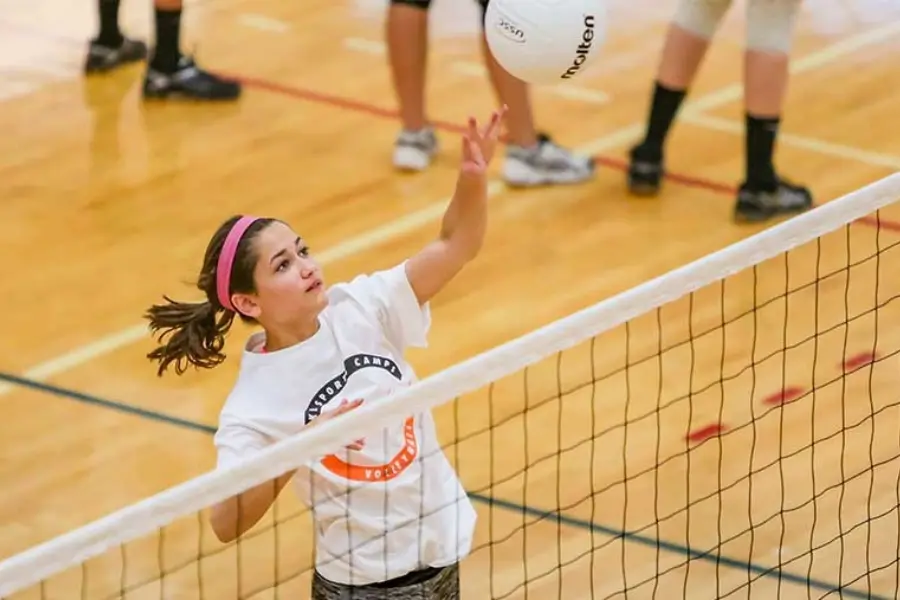
Getting stuff blocked on every attempt that our star player didn’t kill would greatly reduce her efficiency as compared to skillfully guiding the ball over the net to make the best of a bad situation.
Adding errors to our equation gives us a more accurate picture of how well a player is hitting the ball.
You may enjoy reading Hardest To Easiest Positions In Volleyball
What Is A Good Hitting Percentage In Volleyball?
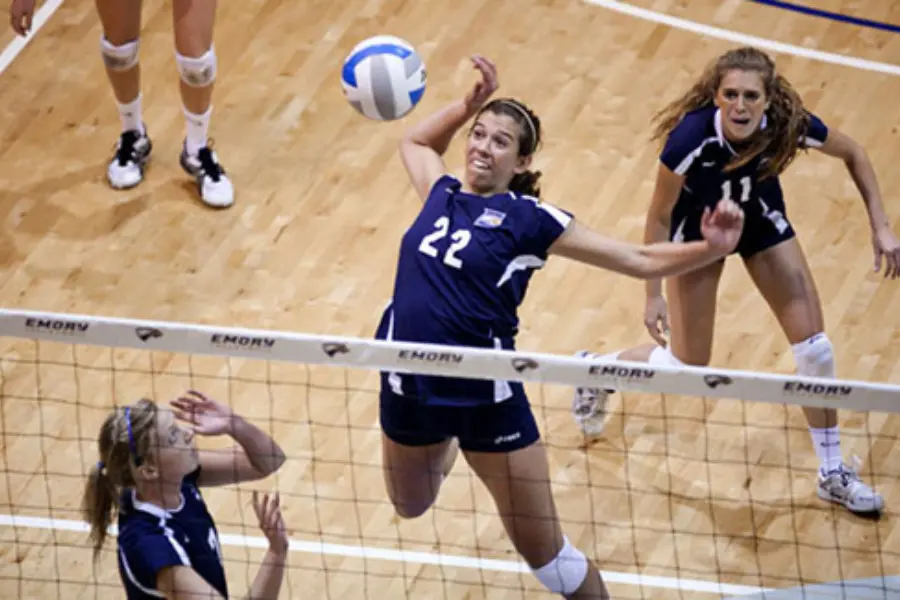
Hit percentage is heavily influenced by position, which is the first thing you have to understand.
Hitting Percentages Vary by Position
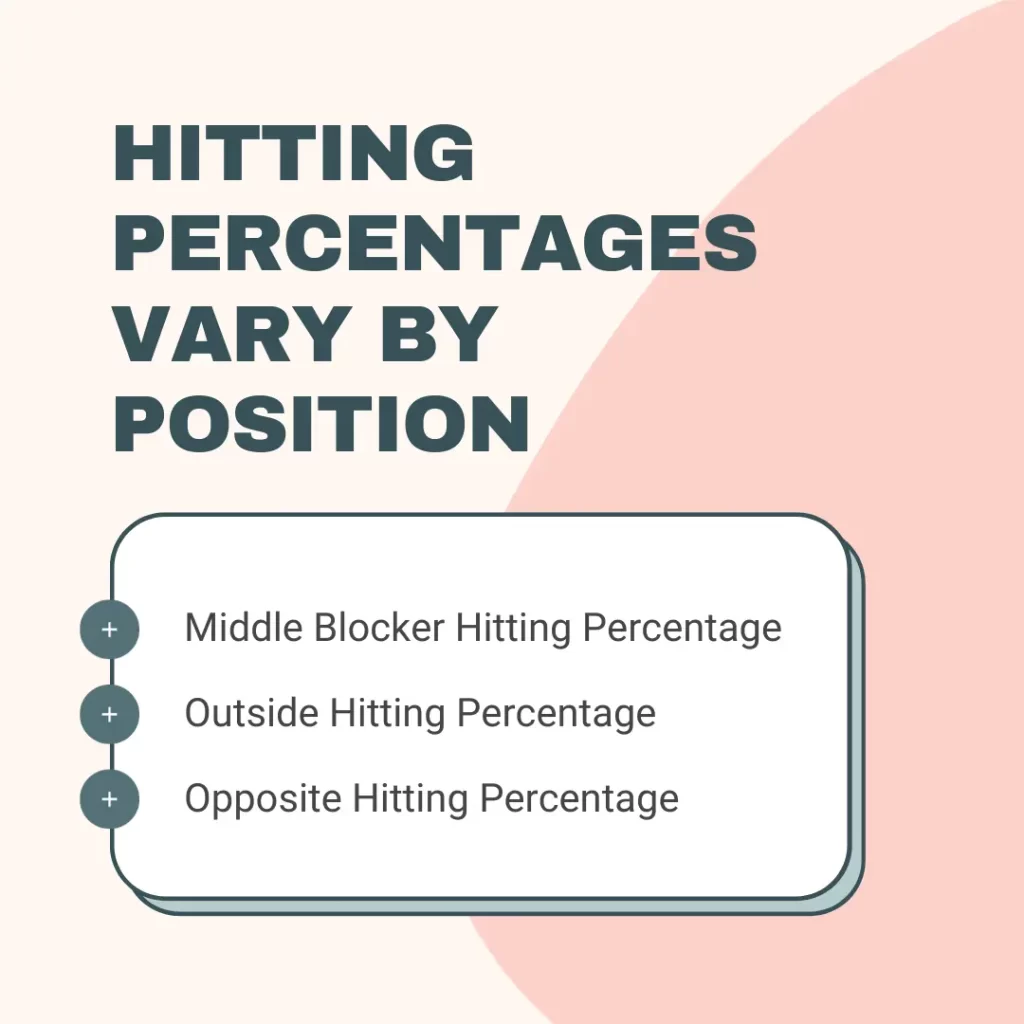
There are different benchmarks for hitting percentages for outside hitters, opposites, and middle blockers.
Middle Blocker Hitting Percentage
In most teams, the middle blocker has the highest hitting percentage.
They’re only really given the ball when the backcourt passes it well.
According to the table above, 24 out of the top 25 NCAA D1 women’s players have been middles this season.
Hitting percentages greater than .350 are considered good for middle blockers. An excellent score is anything over 0.400.
Another factor contributing to middle blockers’ high efficiency is their infrequent back-row attacks.
Taking out a back-row attack is much harder.
You may enjoy reading How Tall Are Middle Blockers In Volleyball?
Outside Hitting Percentage
It is often virtually impossible for outside throwers to kill stray balls since they are often not near their optimal hitting window.
Outside hitters should have a hitting percentage of .250-300, and 300+ is excellent.
In addition, they are often paired with an opposing blocker who will make life hard for them on the net.
Opposite Hitting Percentage
Furthermore, opposites are more likely to receive scrappy sets, resulting in lower hitting percentages.
It is considered excellent for an opposite hitter to have a hitting percentage between .270-320.
Furthermore, the opposites are responsible for reducing the overall efficiency of back-row attacks due to their lower kill percentages.
What Is An Average Hitting Percentage In Volleyball?
A range of .200-250 is generally considered to be reasonable, although it varies based on position.
Those numbers would indicate slight underperformance for a middle blocker.
Can You Have A Negative Hitting Percentage In Volleyball?

This is definitely cause for concern if your hitting percentage consistently drops below .100.
The hit percentage of a player with a .100 is technically satisfactory, but not quite.
When hitting the ball, a player with a negative hitting percentage is more likely to make an error than get a kill.
The player becomes a liability on the court as a result of spiking.
Is A Hitting Percentage Of 0 Considered Average?
You are neither winning nor losing points if your hitting percentage is close to zero.
The fact that your PCT is 0 does not mean you are performing in the middle of the pack…
Your performance is definitely lacking.
In order to get kills, we need to hit the ball well.
With spiking, the ball is presented to you on a silver platter so that you can put it away and end the rally.
In volleyball, we should score points when we spike the ball. The game just works that way.
Volleyball Hitting Percentage Targets
To be considered strong offensively, you and your team should shoot for these figures.
| Position | Hitting Percentage |
| Middle Blocker | .350 |
| Outside Hitter | .250-300 |
| Opposite Hitter | .270-320 |
| Team | .300 |
However, you should still strive to reach these benchmarks even if you aren’t hitting these numbers.
How Do You Increase Your Hitting Percentage In Volleyball?
In order to increase your hitting percentage, there are only two ways…
Either you need to get more kills or you need to make fewer errors when hitting in volleyball to increase your hitting percentage.
Alternatively, you could become a middle-blocker, but that might be cheating.
Increase your kills
If you’re interested in getting more kills in volleyball, you should start with my list of 10 things to do.
Reduce Hitting Errors
There are really just three things that make this all make sense.
1. Too much hitting into the net
There are many reasons why this may happen.
How hard are you hitting the ball? Do you want to impress your teammates by hitting really sharp angles?
There’s a possibility that you are simply inexperienced. It’s possible that you’re short and inexperienced.
Practice tooling and aiming for the back of the court instead of hitting the ball hard when it isn’t in an ideal position.
2. Too much hitting the ball out of bounds
The ball is at least going over the net!
You’re probably trying to hit angles that are too sharp if you’re hitting too wide often, and you’ll be better off aiming for backcourt corners.
3. You’re getting blocked too much
There are a number of things that could be causing this.
It might just be that you’re facing a strong defensive team.
You’re probably not putting your shots in the right places.
Try not to put too much pressure on the ball and just aim for an open area of the court. Your first kills will be few, but baby steps will help.
Volleyball Hitting Percentage FAQs
What is a good hitting percentage in high school volleyball?
You’ll have to take into account what year you’re in when figuring this out.
As errors are common and few players have mastered spikes yet, a team-hitting percentage of .200-250 is probably very good for freshmen.
This level is unlikely to require you to track stats.
A .400 team PCT would be expected for seniors who play against weaker opponents.
There are even players who average north of .700!
What is the record for the highest hitting percentage in volleyball?
There are few records available for women’s D1 volleyball at the professional or international level, but we do have some interesting data to share.
It was once Tyrona Clark who hit .519 for the entire 1988 season.
From 1993 to 1996, Virág Domokos hit .423 for his entire college career.
In 2011, Dylan Davis hit .882 for 15/17 during a match in men’s volleyball.
How do you calculate hitting efficiency?
Hitting % (also known as Attack Efficiency) is calculated as (Kills – Errors) / Total Attempts.
How do you calculate serving percentage in volleyball?
Aces, serve stays in bounds, and serve percentage are calculated by adding them together and dividing by the number of serves.
How do you calculate ace percentage in volleyball?
Ace percentage is calculated by dividing the total number of aces by the total number of service attempts. Serve attempts are only counted when Ace Percentage is recorded.
What Is Considered a Good Hitting Percentage?
The level of play and position of the player can influence a player’s hitting percentage. A hitting percentage above .300 is generally considered good, but elite players may have higher percentages.
Is Hitting Percentage the Same as Kill Percentage?
No, hitting percentage and kill percentage are not the same. The hitting percentage includes all attempted attacks, while kill percentage specifically measures how many attacks result in a point (kill).
How Often Should Hitting Percentage Be Tracked?
Tracking a player’s hitting percentage regularly can help monitor his consistency and improvement over time. A comprehensive evaluation must also consider other performance metrics in addition to hitting percentage.
Conclusion
Although a great hitting percentage is important for any volleyball team, it’s not the end of the world if it’s not perfect. When you train consistently, hit strategically, and work together, you can steadily increase your hitting percentages.
Keeping track of your hitting percentages might be a good idea right now. A solid technique is essential for improving your hitting.
You may enjoy reading What Is A Lift in Volleyball?


